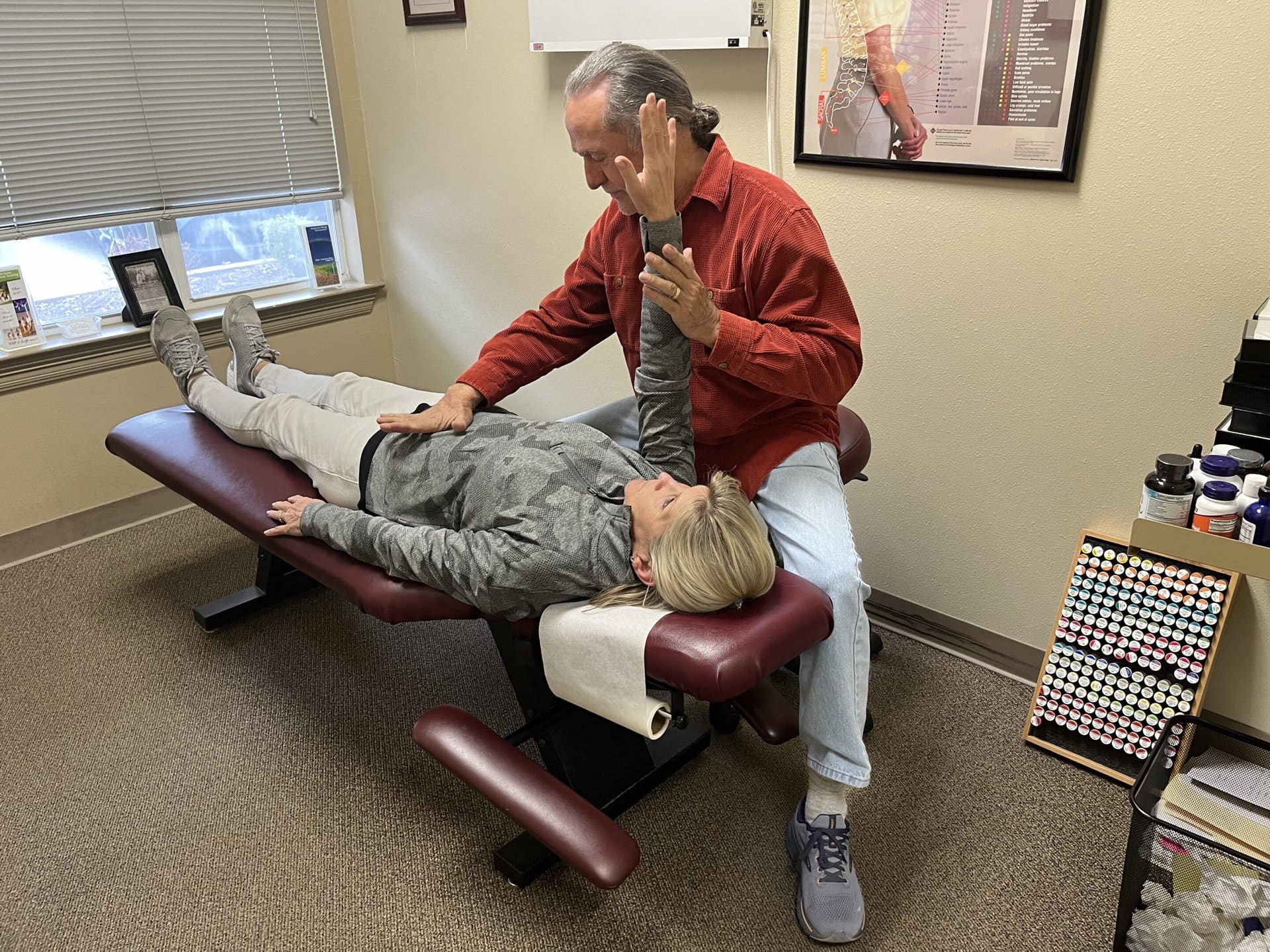Sciatica is a nerve pain that radiates along the path of the sciatic nerve, which extends from the lower back down through each leg, affecting countless individuals globally. Chiropractic care can offer significant relief for those suffering from this debilitating condition. This piece discusses the effectiveness of chiropractic techniques in providing relief from sciatica. Readers will learn about various treatments that chiropractors use to alleviate this condition.
Understanding What Causes Sciatica
Sciatica symptoms often stem from underlying issues such as herniated discs, spinal stenosis, or piriformis syndrome, which put pressure on the sciatic nerve. For instance, a professional athlete might experience sudden sciatica symptoms after a severe back injury during a game, highlighting the need for immediate chiropractic attention. These professionals utilize their skills to identify and treat the root causes of sciatica, reducing pain and improving mobility.
- Most common causes include herniated discs and bone spurs.
- Inflammation and nerve compression are direct contributors to the pain.
- Early chiropractic intervention can prevent further nerve damage.
Chiropractic Techniques for Sciatica
Spinal Adjustments for Relief
Chiropractors often use spinal adjustments to correct the alignment of the spine and reduce nerve irritability, which is one of the main causes of sciatica pain. These adjustments involve precise manipulation of the vertebrae, which can lead to immediate relief of sciatic nerve pressure. A continuous regimen may reduce the likelihood of future episodes; however, maintaining spinal health through regular visits can prolong the benefits.
- Adjustments aim to realign the spine and reduce nerve pressure.
- Each session may improve nerve function and alleviate pain.
- Ongoing care helps maintain alignment and prevent recurrences.
Soft Tissue Therapy Benefits
Soft tissue therapies include massage and myofascial release, which help to relax tightened muscles contributing to sciatic pain. These techniques enhance blood circulation around the sciatic nerve, promoting healing and offering relief from pain and stiffness. Regular therapy can also prevent muscle spasms that often accompany sciatica.
- Enhances circulation, reducing inflammation around the sciatic nerve.
- Helps relax muscle tension that contributes to sciatica.
- Prevents muscle spasms associated with sciatic pain.
Chiropractic Exercises at Home
Chiropractors also recommend specific exercises that patients can do at home to strengthen the muscles supporting the spine. These exercises are designed to improve flexibility and prevent the conditions that lead to sciatica. By following a personalized exercise plan, patients can manage their condition effectively at home, complementing the in-office treatments provided by their chiropractor.
- Targeted exercises strengthen back and core muscles.
- Improved flexibility can reduce the recurrence of sciatica symptoms.
- Home exercise routines support overall spinal health.

Benefits of Chiropractic Care
Immediate Pain Relief Techniques
One of the immediate benefits of chiropractic care for sciatica is pain relief, which many patients experience right after their first adjustment. Techniques such as ice therapy and TENS units might be used in conjunction with adjustments to enhance pain management. This combination of therapies can significantly reduce the need for pain medication and its associated risks.
- Immediate relief from adjustments can decrease dependence on medication.
- Combined therapies can offer comprehensive pain management.
- Techniques like TENS provide non-invasive pain relief options.
Long Term Health Benefits
Chiropractic care offers benefits that extend beyond immediate pain relief, including improved posture and enhanced nervous system function. These improvements can lead to better overall health and a reduced risk of future back problems. Regular chiropractic care fosters a proactive approach to health, emphasizing prevention rather than just treatment.
- Improved posture through regular adjustments.
- Enhanced nervous system function supports overall health.
- A proactive approach to health reduces the risk of future issues.
Preventative Care Strategies
Continuing with regular chiropractic sessions can serve as a preventative measure against the recurrence of sciatica. Through ongoing maintenance, chiropractors can detect and address minor misalignments before they result in pain. This proactive treatment keeps the spine in optimal condition and prevents the degenerative processes that can lead to sciatica.
- Regular check-ups help maintain spinal health.
- Early detection of misalignments prevents pain.
- Prevents degenerative changes in the spine.

Choosing the Right Chiropractor
Finding Qualified Chiropractors
When seeking chiropractic care for sciatica, it’s crucial to choose a professional who is not only qualified but also experienced in treating this specific condition. Patients should look for chiropractors with positive reviews and credible certifications. Asking for recommendations from healthcare providers or friends who have had positive experiences with chiropractic care can also be beneficial.
- Ensure the chiropractor has the necessary certifications.
- Look for specialists with experience in treating sciatica.
- Consider recommendations from trusted sources.
What to Expect at Your Visit
During the initial visit, the chiropractor will conduct a thorough assessment, including a physical exam and possibly imaging tests like X-rays, to determine the underlying cause of sciatica. Patients should expect to discuss their medical history and describe their symptoms in detail. This comprehensive approach ensures that the treatment plan is tailored to their specific needs.
- Comprehensive evaluation to identify the cause of pain.
- Discussion of medical history and symptom patterns.
- Personalized treatment plans based on individual assessments.
Questions to Ask Your Chiropractor
It’s essential for patients to be proactive in their care by asking the right questions during their consultations. Inquiring about the types of adjustments used, the expected duration of treatment, and ways to prevent future episodes of sciatica can empower patients to take charge of their health.
- Inquire about the chiropractic techniques that will be used.
- Ask about the expected number of sessions.
- Discuss strategies for preventing future sciatica episodes.
Key Takeaways for Chiropractic and Sciatica Relief
- Chiropractic care offers effective treatment for immediate sciatica relief.
- Regular adjustments and exercises can prevent future sciatica episodes.
- Choosing the right chiropractor is crucial for successful treatment.

Frequently Asked Questions
- How quickly can I expect relief from sciatica with chiropractic care?
- Many patients report feeling relief after just a few sessions, though the exact timeline can vary based on the individual case.
- Are there any risks associated with chiropractic adjustments for sciatica?
- Chiropractic care is generally considered safe when performed by a licensed professional, but discussing individual health concerns with a chiropractor is recommended.
- Can chiropractic care cure sciatica permanently?
- While chiropractic care cannot cure sciatica, it can significantly alleviate symptoms and prevent recurrences by addressing the underlying issues.
- What should I do to prepare for my first chiropractic visit for sciatica?
- Bring any relevant medical records, wear comfortable clothing, and be prepared to discuss your symptoms in detail.
- Is chiropractic care a better option than surgery for sciatica?
- For many patients, chiropractic care is an effective, non-invasive alternative to surgery, but severe cases may require additional medical interventions.
Mandeville Total Wellness specializes in Nutrition Response Testing, Chiropractic Care and other wellness treatments, dedicated to fostering your body’s natural healing abilities. Our team combines years of expertise in nutrition and chiropractic wellness with a passion for holistic health, offering personalized care tailored to each individual’s needs. Grounded in the belief that true wellness comes from harmony within the body’s systems, we are at the forefront of a health revolution, guiding you towards optimal health. Discover a vibrant, healthier you with Mandeville Total Wellness, your partners in holistic healing.












